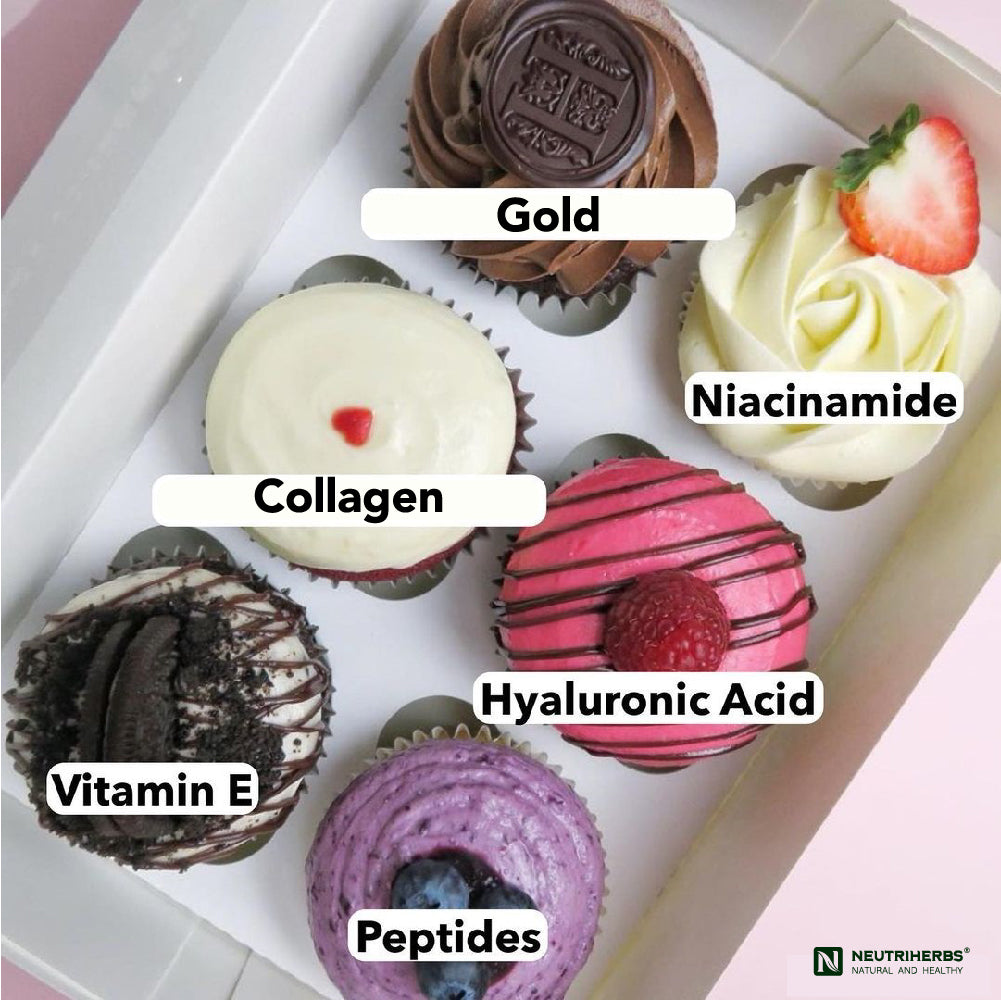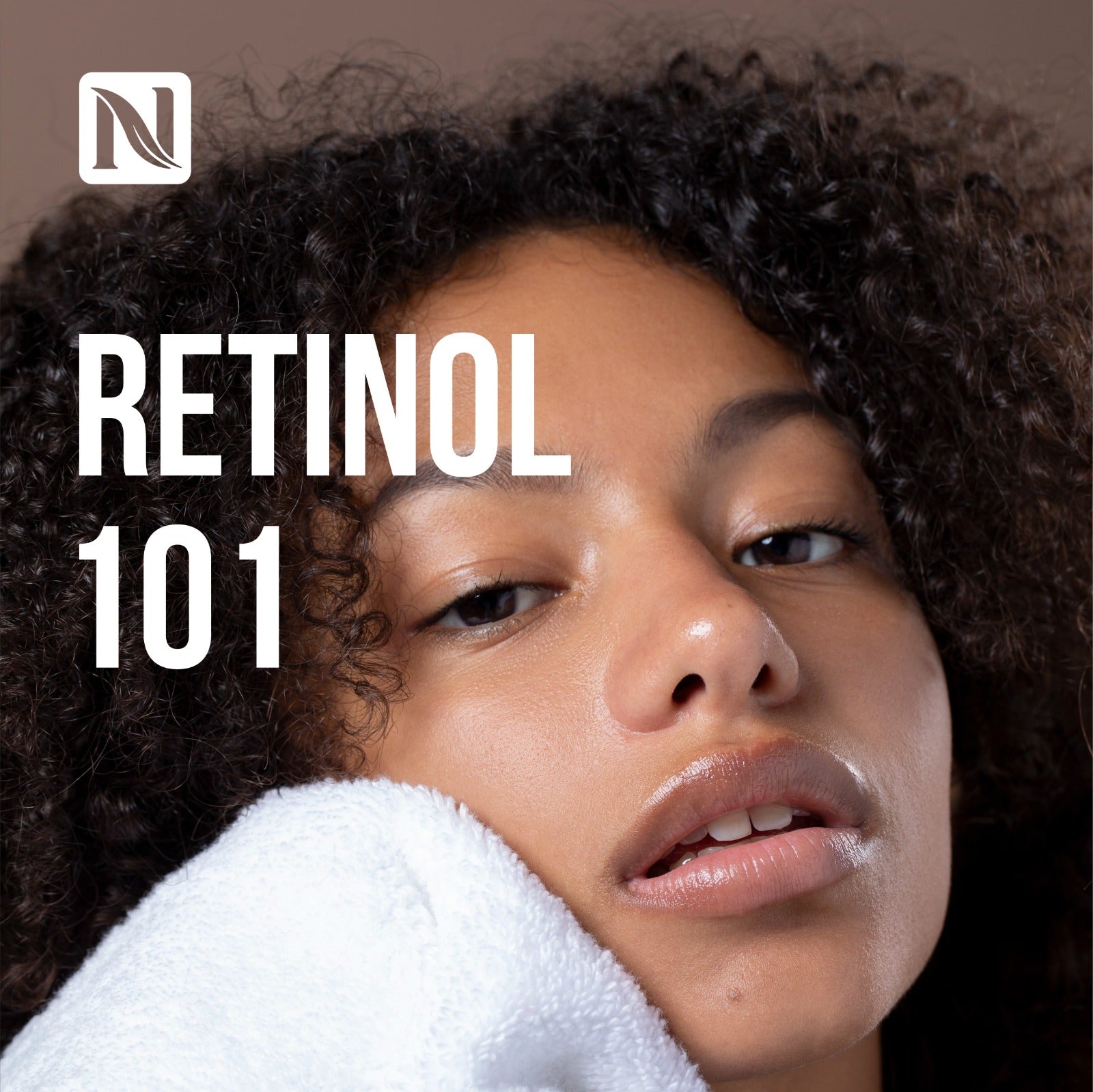
As someone interested in skincare, you are exposed to hundreds of skincare products every time you go online or local beauty store. To add to this, most skincare brands will put certain phrases like hydrating, clarifying, or anti-aging on their labels to grab your attention and stand out in the sea of products you are faced with.
With such simple labeling, it should be easy to find a product that will address your skin concerns. Unfortunately, that is often times not the case and you may end up buying a product that claims to treat a specific skin concern and end up disappointed. So it is no surprise that most of the women we talk to find themselves confused and overwhelmed when looking for best skincare products to achieve healthy beautiful skin.

One way to get better results with skincare is to develop a deeper understanding of the ingredients in skincare. In doing so, you get to make informed buying decisions that cut through the noise of marketing tactics to find the products that would really work in achieving your skin care goals.
There are two categories of ingredients found on a skincare product label: active and inactive. This can seem counterintuitive so if you find yourself wondering why any company would waste their time and money on ingredients that don’t actually do anything, you are not alone. In reality, inactive ingredients are typically the delivery method for other elements of the product formula. Usually, these ingredients are water or oil-based.
So, what are active ingredients in skincare?
These are the elements of a product that generally are designed to deliver the benefits that are advertised on its label. Although inactive ingredients listed on the label may provide certain benefits, you can usually expect that active ingredients will do what they say they will. Every single product, including natural formulas, utilize active ingredients although their strengths will vary depending on the type of product you are using. In essence, active ingredients are what make a skincare product effective. And the Food & Drug Administration (FDA) requires that these active ingredients be specifically called out on the packaging of a skincare product that would be considered as a drug since the active ingredients are drug ingredients.
In addition, the FDA also requires that ingredients be listed in order of prominence within the formula. This is especially helpful when you are looking for specific ingredients whether to use or avoid them.
The “First Five” Ingredient Rule
When reading a skincare ingredient list, many people follow the First Five Rule. This rule claims that because the first five ingredients listed on a label have the highest percentages, they are ultimately what determines the true performance of a product.
Those who follow this rule claim that any ingredients listed after the first five won’t have a meaningful effect on the skin, because they are included at too low a percentage to perform. While it’s true that ingredients are generally listed in order of highest to lowest concentration, skincare formulations are not that straight forward. In fact, it’s almost impossible to tell how well an ingredient will perform based on where it falls in the ingredient label.
The INCI List
INCI stands for International Nomenclature of Cosmetic Ingredients. It’s a standardized system for listing ingredient names on cosmetic product labels. Because an ingredient can have different names depending on the country, using a standardized system eliminates confusion and makes international trade easier. INCI has been in place since the 1970s and is used in many major countries, including the USA, China, Japan, and all of the European Union. If you’ve ever wondered why the ingredients on your product label are listed under their scientific names, well now you know!

What you should know is that Ingredient lists and labels help us understand formulas better – but they do not tell the whole story of a products.

A Skincare Product Ingredient Label will tell you:
- What’s in the product
- Highest amount of ingredients are listed first
- Lowest amount of ingredients are listed towards the end.
- Once it gets to ingredients that are included at a concentration of 1% or less, they no longer have to be in order.
- The first ingredient in any skincare product is usually water or aloe (which is mostly made up of water). These often make up 70%–95% of the product, which is perfectly acceptable.
- After that, the next four ingredients are typically included at concentrations of anywhere between 3-5%.
- After the first five ingredients, you can still find many performance-based active ingredients, along with thickeners, preservatives, fillers, and everything else that makes up a skincare product.
Note: A higher percentage of an active ingredient does not necessarily mean the product will more effective. For example, some active ingredients and exfoliants like niacinamide perform better at low concentrations.
A Skincare Product Ingredient Label won't tell you:
- The exact amount or percentage of any ingredient
- The quality, source or stabilization of ingredients
- The formula used in combining various ingredients inside a product together
- The texture, consistency and viscosity of product
- If the product will or won't work for your skin - that's a result of how the product is formulated.
When a product formulator is determining which percentage of an ingredient should be used, the ingredient is carefully considered based on information provided by the ingredient supplier, including the recommended use level for optimum safety and performance, the range of use levels that achieve different results, and the clinically tested level based on exact percentage.
Why The “First Five” Rule Isn’t Always Right
To make a long story short, an ingredient doesn’t have to be listed within the top five to have a positive impact on the skin. In fact, the first five ingredients typically make up the format of a product—for example, the first five ingredients in a cream are typically the ingredients that make it a cream and the first five ingredients in a cleanser are ingredients that makes it a cleanser. This doesn’t mean the First Five Rule never applies, but there are many exceptions to this rule.
Active Ingredients in Cosmetics
Here are some of our in-house skincare expert’s favorite active ingredients and what they do:
Alpha Hydroxy Acid (AHA)
The AHA family of acids are derived from natural sources such as fruit, milk or sugar. Generally speaking, the benefits of AHAs on the skin include exfoliation, brightening, smoothing, anti-aging, and acne prevention. Two of the most commonly used AHAs in skincare, however, are glycolic acid that is derived from sugar and lactic acid which is made from milk. The former is unique in that the molecules of glycolic acid are smaller than those found in other AHAs which allows it to penetrate deeper into the skin providing its benefits more effectively and to more layers of the skin. Lactic acid, on the other hand, offers the same benefits of other AHAs but as a non-friction exfoliant that breaks down and dissolves dead skin cells without causing skin irritation, it is suitable for use on sensitive skin.
Vitamin C
As an antioxidant, vitamin C is a key ingredient to keep your skin looking bright and youthful. First, it helps protect against harmful free radicals by neutralizing them which, in turn, helps to decrease the visible signs of aging on your face such as fine lines, wrinkles, dark spots from sun damage, and loss of moisture. But the most notable and popularized benefit of vitamin C is its ability to brighten your face and diminish any discoloration. Its antioxidant properties work to even your skin leaving you with a radiant glow. However, vitamin C is a temperamental ingredient and difficult to stabilize for extended shelf life so looking for a product that also includes vitamin E or ascorbic acid can help increase its longevity.
Vitamin C skincare is available as cleansers, serums, creams, sunscreens, toners, eye creams and you can browse our Entire Vitamin c range skincare to see which to add to your daily skincare routine.
Hyaluronic Acid
Hyaluronic acid is a powerful ingredient that has garnered a lot of attention over the past few years thanks to its intense moisturizing properties and anti-aging capabilities. As a naturally occurring sugar found in the body, it is a major component of the skin’s structure. But as we age, naturally produced levels of hyaluronic acid begin to decrease which contributes to a loss of skin tone and volume. But topical application helps to counteract the visible effects of lost hyaluronic acid. First, its capacity to retain water and help regulate your skin’s moisture levels keeps your skin balanced and hydrated. Secondly, hyaluronic acid works to improve skin resilience. Together, these two functions combine to restore volume and fullness to the skin reducing the appearance of fine lines and wrinkles. Considering adding hyaluronic acid to your regimen? Check out our Hyaluronic acid serum
Retinol
Within the family of retinoids, retinol is a man-made derivative of vitamin A and when placed on the surface of the skin, it is converted into retinoic acid. It is a key ingredient in many skincare products because of the significant benefits it has on skin including minimizing the appearance of skin damage caused by free-radicals and minimizing the visible signs of aging. Retinol helps to combat the natural loss of facial fullness by increasing the skin’s ability to retain moisture. And by increasing your skin’s hydration it will appear fuller and smoother. With consistent and extended use, retinol can even help to soften age spots and even your skin tone as it sloughs away layers of dead skin and unclogs pores. Considering trying retinol? Check out Neutriherbs Retinol cream and Retinol Serum
Salicylic Acid
Salicylic acid is a part of the beta hydroxy acid (BHA) family and a popular ingredient in many over-the-counter acne products and treatments. It is primarily used to treat non-inflamed breakouts and blackheads by breaking up dead skin cells and removing them from the surface of the skin. It also helps to reduce the presence of excess oil on your skin and can penetrate deeper into the pores to clear it of any otherwise clogging debris. Though it is naturally occurring in white willow bark and wintergreen, most of the salicylic acid used today is synthetic.
Ceramides
A critical part of the skin’s natural barrier which helps to protect against a variety of environmental stressors while retaining moisture, ceramides are lipids naturally found in your skin. If there is an imbalance in the ceramide ratio of your skin, its protective barrier will become compromised and ineffective leading to dryness, itching, and inflammation. Unfortunately, your natural levels of ceramides can be easily decreased when exposed to hot water, soaps, certain chemicals, and other environmental factors. So utilizing products which feature ceramides can help to rebuild this barrier and prevent further damage.
Niacinamide
Niacinamide is a derivative of vitamin B3 and is very effective at soothing irritated skin. Thanks to its soothing and antioxidant properties, applying niacinamide to your skin can help minimize the redness and irritation associated with certain skin conditions. It also boosts your skin’s ability to retain moisture while increasing the effectiveness of ceramides and rebuilding the skin’s natural protective barrier.
Vitamin E
Found naturally on human skin, vitamin E levels are often depleted due to sun exposure and other environmental irritants. However, it has antioxidant properties that can help protect against and limit the damage of harmful free radicals. It can also be used to stabilize otherwise volatile or temperamental ingredients such as vitamin C. Interested in using Vitamin E Products alongside your Vitamin C to enhance results? Check out our Vitamin E Products.
Benzoyl Peroxide
Benzoyl peroxide is an extremely effective ingredient for treating acne as it kills bacteria within your pores. Due to the fact that bacteria cannot survive in an oxygen-rich environment, it is reduced when benzoyl peroxide introduces oxygen to the pores. Fewer bacteria (and clearer pores) means fewer breakouts. However, benzoyl peroxide can wreak havoc on the balance of your skin and result in over-drying.
Sulfur Another effective ingredient for acne treatment is sulfur. Sulfur works by drying out the top layer of skin and easily peeling it away from the surface of your face. Doing so helps to keep pores unclogged and promotes the growth of new layers of skin. It also has antibacterial properties which can help combat lingering bacteria on the skin.
Choosing the Right Ingredients
Despite how many ingredients are described above, this list only scratches the surface of what is available across the skincare industry. So, it is important to be careful when selecting the products and ingredients you use as each one has different uses and side effects. Start by identifying your skin type. This will help you determine the most appropriate and effective ingredients for your skin and goals. As you begin to select and introduce new ingredients to your skin, you will want to do so slowly and individually so you can monitor your skin’s reaction for adverse effects.
While you may respond well to two ingredients separately, layering them on your skin essentially combines the ingredients which could produce undesirable side effects.
The strength and type of product you are using will also impact your skin’s ability to withstand an ingredient’s application. Many active ingredients come in both prescription and over-the-counter strengths, but don’t let this fool you into thinking the products you have access to without a doctor’s prescription can’t cause a reaction. In fact, over-the-counter products can vary widely in their strengths as well with ranges between 1% and 12% or more depending on the ingredient. Fortunately, the FDA requires active ingredients designated as drug ingredients to be explicitly listed separately on product packaging and these labels are sometimes required to include the strength of these ingredients.
With that said, read your labels carefully if you want to find the right skincare products for your skin!


